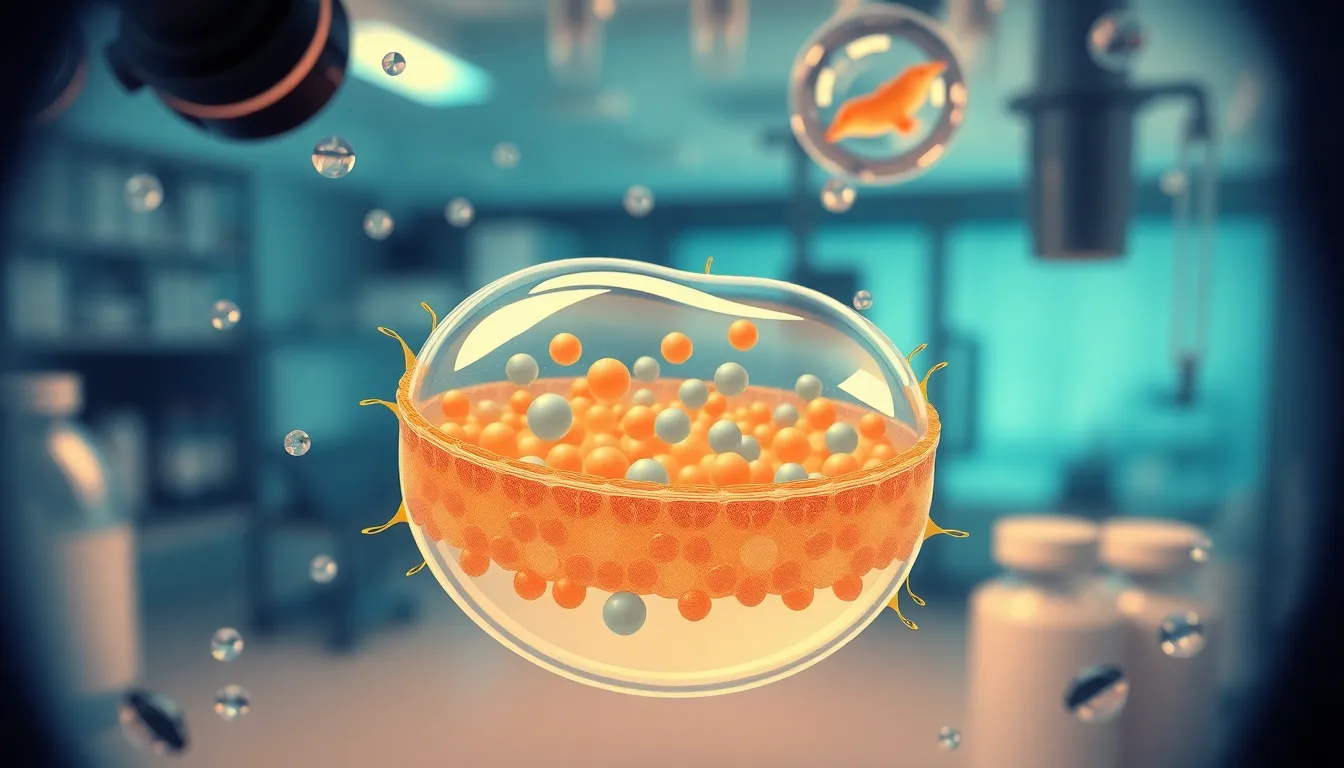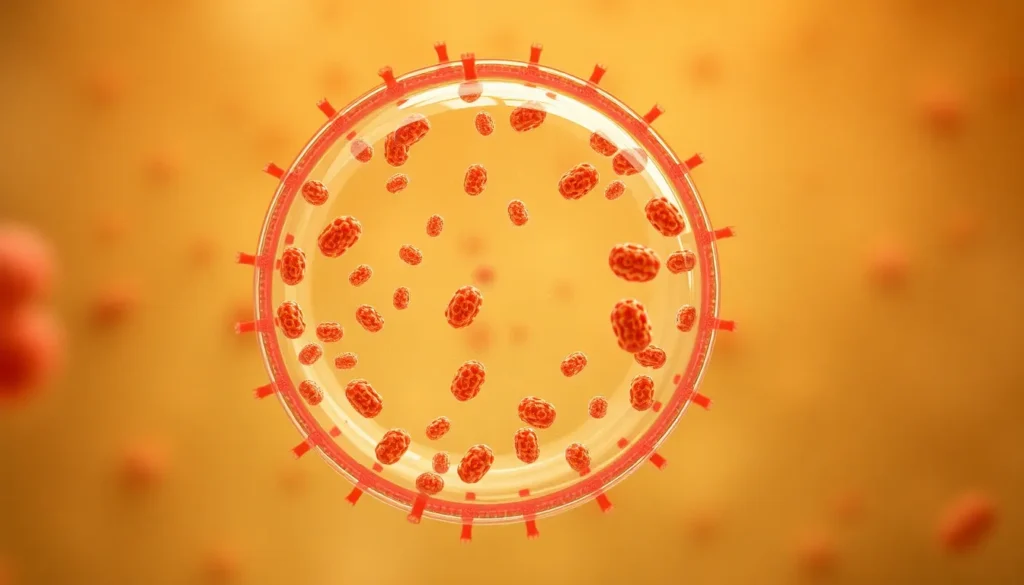When it comes to the microscopic world, prokaryotes are the unsung heroes of biology. These tiny powerhouses, which include bacteria and archaea, have a lot more going on than meets the eye. But one question often leaves curious minds scratching their heads: do prokaryotes have a cell membrane? Spoiler alert: the answer is a resounding yes!
Table of Contents
ToggleOverview of Prokaryotic Cells
Prokaryotic cells are the simplest and smallest forms of cellular life, primarily represented by bacteria and archaea. These organisms typically measure 0.1 to 5.0 micrometers in diameter. They lack a defined nucleus, which distinguishes them from eukaryotic cells.
Cell membranes play a crucial role in prokaryotic cells. Each prokaryote possesses a plasma membrane that encapsulates its cytoplasm. This membrane controls the entry and exit of substances, maintaining the cell’s internal environment. Additionally, the plasma membrane consists mainly of phospholipids and proteins, giving it both flexibility and structure.
Many prokaryotes possess a cell wall outside the plasma membrane, providing additional protection and shape. The composition of the cell wall varies among different types, with bacterial cell walls containing peptidoglycan, while archaea utilize unique materials, such as pseudopeptidoglycan.
Organisms in this category undergo reproduction through binary fission, allowing rapid population growth. This process requires the cell to replicate its DNA and split into two identical daughter cells. Prokaryotic cells can exist as single cells or organize into colonies, demonstrating diverse morphological characteristics.
Prokaryotes thrive in various environments, including extreme conditions, such as high temperatures, salinity, and acidity. Their adaptability contributes to their ecological significance, enabling them to occupy niches where other organisms cannot.
Structure of Prokaryotic Cells

Prokaryotic cells exhibit simple yet functional structures, highlighting their unique biology. Each prokaryote comprises essential components, including a cell membrane.
Cell Membrane Composition
The cell membrane consists primarily of a phospholipid bilayer. Phospholipids contain hydrophilic heads that face outward and hydrophobic tails that point inward, forming a semipermeable barrier. Embedded proteins serve various functions, such as transport and signaling. Carbohydrates often attach to these proteins or lipids, facilitating cell recognition. Overall, the composition varies slightly between bacteria and archaea, reflecting their distinct evolutionary paths.
Functions of the Cell Membrane
The cell membrane plays critical roles in prokaryotic life. It regulates the movement of ions, nutrients, and waste products in and out of the cell, maintaining homeostasis. This selective permeability ensures that essential compounds enter while harmful substances remain outside. Additionally, the membrane participates in signaling processes, allowing prokaryotes to respond to environmental changes. Protection from external threats, including toxins and predators, also falls within its essential functions. These roles emphasize the membrane’s importance for survival and adaptation.
Prokaryotes and Their Distinct Characteristics
Prokaryotes showcase unique features that set them apart in the cellular world. Unlike eukaryotic cells, prokaryotes lack membrane-bound organelles and a defined nucleus. They contain circular DNA located in a region called the nucleoid. Eukaryotes have linear chromosomes housed within a nucleus. Prokaryotic cells typically measure between 0.1 to 5.0 micrometers, making them significantly smaller than most eukaryotic cells. While bacteria and archaea constitute the primary prokaryotic groups, some eukaryotes are also unicellular.
Differences from Eukaryotic Cells
Prokaryotic cells differ markedly from eukaryotic cells in structure and organization. Eukaryotic cells contain multiple organelles, such as the endoplasmic reticulum and mitochondria, each enclosed by membranes. In contrast, prokaryotes lack these structures, relying on simpler adaptations for cellular functions. The cell wall of bacteria often contains peptidoglycan, whereas archaea utilize distinct materials. Functionally, prokaryotes reproduce via binary fission, leading to rapid population increases, unlike eukaryotes, which usually undergo more complex division processes like mitosis.
Variability in Cell Membrane Presence
Prokaryotes exhibit variability in their cell membrane structures and compositions. While all prokaryotes possess a cell membrane, the specific composition can differ. Most bacterial membranes contain phospholipids, creating a semipermeable barrier. Archaea, on the other hand, may have unique lipid compositions with ether bonds instead of ester bonds. Some prokaryotes, such as certain bacteria, may also feature additional outer membranes. These variations highlight the adaptability of prokaryotic cells, allowing them to thrive in diverse environments.
Evidence Supporting Cell Membrane in Prokaryotes
Prokaryotes possess cell membranes, a feature crucial to their survival. Electron microscopy reveals detailed structures of these membranes, showing the phospholipid bilayer arrangement that is consistent across most species. Experimental studies demonstrate that prokaryotic membranes serve essential functions, such as maintaining osmotic pressure and facilitating transport processes.
Research indicates that proteins embedded within the cell membrane are integral to various biochemical processes. These proteins assist with nutrient uptake and waste expulsion, highlighting their significance in cellular homeostasis. Additionally, lipopolysaccharides found in some bacterial membranes contribute to structural integrity and protection against environmental stresses.
The adaptability of prokaryotic cell membranes varies significantly among different groups. For instance, archaeal membranes often contain unique glycerol ethers that enhance stability in extreme conditions, such as high temperatures or acidic environments. Conversely, bacterial membranes primarily consist of phospholipids, which support diverse metabolic functions.
Studies of membrane fluidity in prokaryotes confirm the dynamic nature of these structures. Alterations in lipid composition affect membrane flexibility, ultimately influencing how prokaryotes respond to environmental changes. Furthermore, the presence of membrane-associated enzymes underscores their role in critical metabolic pathways, further supporting the importance of the cell membrane.
Knowledge of prokaryotic cell membranes deepens understanding of their evolutionary adaptations. Prokaryotes demonstrate an impressive capacity to thrive in extreme habitats, and their membranes play a key role in this resilience. Observations confirm that whether through structural variations or biochemical functions, the presence of a cell membrane is vital for prokaryotic life.
The presence of a cell membrane in prokaryotes is fundamental to their survival and functionality. This semipermeable barrier not only regulates the movement of substances but also plays a critical role in maintaining homeostasis. Prokaryotic membranes exhibit remarkable diversity, reflecting their adaptability to various environments.
Understanding the structural and functional aspects of prokaryotic cell membranes enhances appreciation for these microscopic organisms. Their ability to thrive in extreme conditions highlights their evolutionary success and ecological importance. The study of prokaryotes continues to reveal insights into cellular life, emphasizing their role as the simplest yet most resilient forms of life on Earth.








